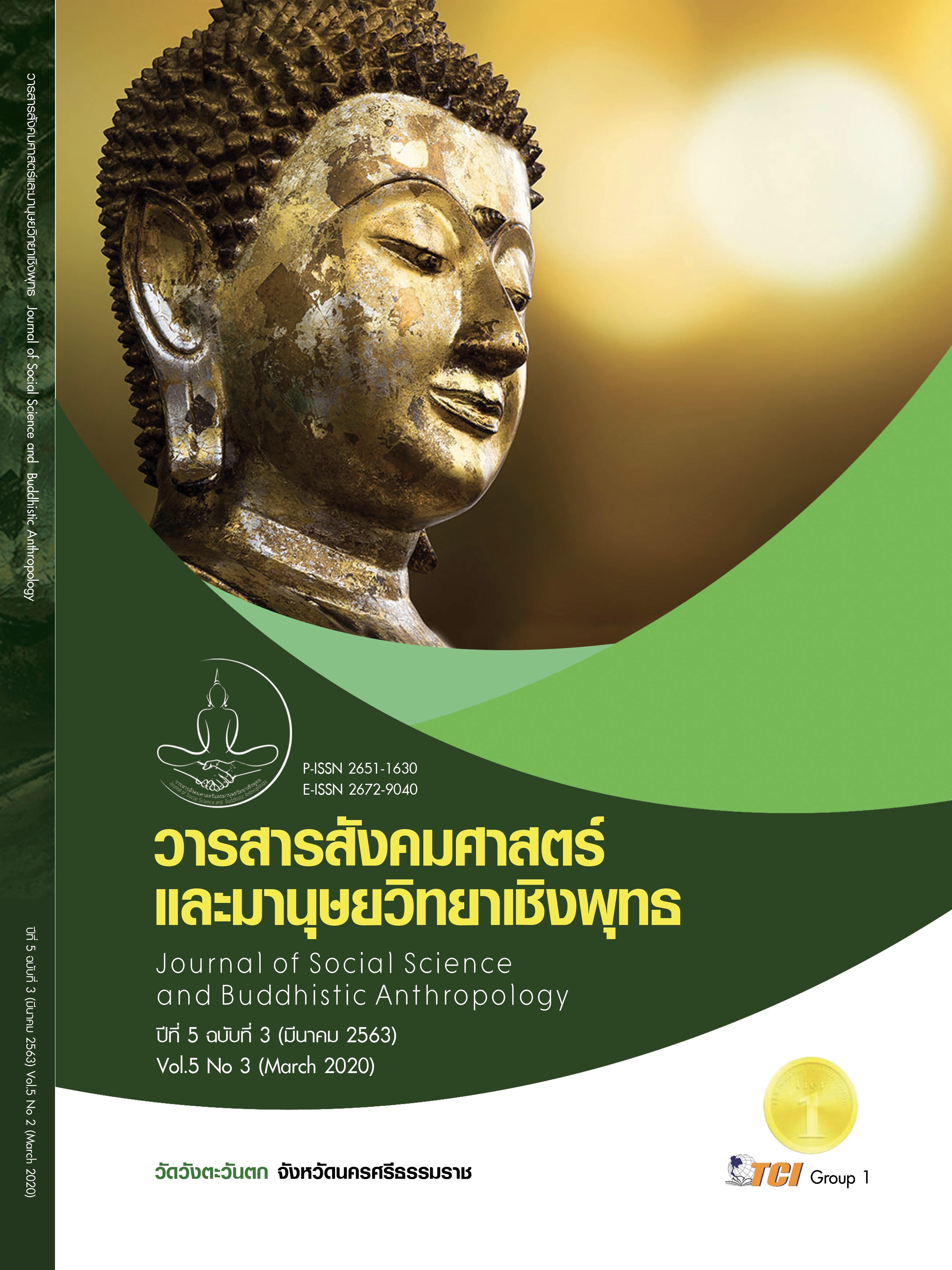AN ANALYTICAL STUDY OF FIGURATIVE LANGUAGES IN THE VISUDDHIMAGGA
Keywords:
Language, Figurative, VisuddhimaggaAbstract
The purposes of this research are ) to study the frequency of the figurative languages that appears in the Visuddhimagga. 2) to analyze the meaning and conceptual structure of the meaning of the figurative languages in the Visuddhimagga. 3) to analyze the pattern of the figurative languages in the context of cultural terminology in the Visuddhimagga. This research is a documentary research. Population in the study is the Visuddhimagga written by Buddhaghosa and translated by Somdej Phra Buddhacarya (Ard Asabhamahathera). Data are collected by taking notes from primary and secondary sources that are provided by reading and extracting the meaning of each of information one by one. Then categorizing and indexing the data with the computer program to summarize the findings and present the research results by descriptive discussion based on the data obtained. The results of the research found that: 1) 10,918 figurative were used according to the categories specified, in order from highest to lowest; rhetorical question 6,811 times metaphor 2,089 times allusion 1,048 times simile 646 times metonym 244 times symbolic 37 times synecdoche 19 times hyperbole 13 times onomatopoeia 5 times personification 3 times oxymoron 3 times paradox does not appear. 2) There are the semantic source domains more than 1 to show the conceptual meaning of the same statement. Each semantic source domain has its own conceptual structure. 3) The patterns of figurative languages are complex in many dimensions in the context of cultural vocabulary, in order from highest to lowest; social vocabulary 6,966 words, religious vocabulary 1,048 words, ecological vocabulary 321 words and material vocabulary 170 words. The new knowledge gained in this study is the conceptual metaphor theory, and the equivalence principle theory in this analysis are suitable for a part of an explanation the meaning of figurative languages but for interpretation or translation the meaning of words need to study more.
References
จันทรัชนันท์ สิงหทัต เนตรนิมิต และ สมิทธิพล เนตรนิมิต. (2562). วิสุทธิมรรค: วิถีแห่งการยกระดับภูมิปัญญา ในพุทธศาสนาเถรวาท. วารสารมหาจุฬาวิชาการ, 6(1), 66-84.
ชุมสาย สุวรรณชมภู. (2456). ความรู้เรื่องโวหารและภาพพจน์ ในภาษาไทยเพื่อการสื่อสาร. นครปฐม: โรงพิมพ์มหาวิทยาลัยศิลปากร.
พระพุทธโฆสเถระ. (2547). คัมภีร์วิสุทธิมรรค. (พระพุฒาจารย์ อาจ อาสภมหาเถระ และคณะ, ผู้แปลและเรียบเรียง). กรุงเทพมหานคร: บริษัท ประยูรวงศ์พริ้นท์ติ้ง จำกัด.
Byram, M. (1997). Teaching and Assessing Intercultural Communication Competence. Clevedon: Multilingual Matters.
Canale, M. & Swain, M. (1980). Theoretical base of communicative approaches to second language teaching and testing. Applied Linguistics, 1(1), 1-47.
Kubota, R. (2008). Critical approaches to teaching Japanese and culture. in J, Mori. and A. S. Ohta (eds.). Japanese applied linguistics: Discourse and social perspective. Retrieved february 15, 2020, from https://www. cambridge.org/core/journals/languageteaching/article/review-ofrecent-research-20002010-on-learning-and-instruction-with-specific-reference-to-l2-japanese/5005998CC962F50E2112214F4D86301B
Lakoff, G. & Johnson, M. (1980). Metaphors we live by. Chicago: University of Chicago Press.
Nida, E A. (1964). Linguistic and ethnology in translation problem. In Language in culture and society: A reader in linguistics and anthropology. New York: Harper and Row.
__________. (1975). Componential Analysis of Meaning. The Hague: Mouton Publishers.
Norman, K R. (1983). Pali literature: incl. In the cannon literature in prakrit and sanskrit of all the hinayana schools of Buddhism. Wiesbaden: Harrassowitz.
Perdue, C. and Klein, W. (1993). Concluding remarks. In Perdue, C. (ed.). In Adult language acquisition: cross - linguistic perspectives: Volume 2, The results. Cambridge: Cambridge University Press.
Reaske, C R. (1966). How to analyze poetry. NewYork: Monarch Press.








